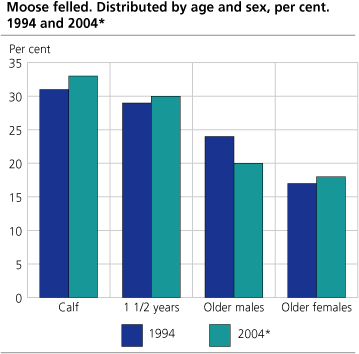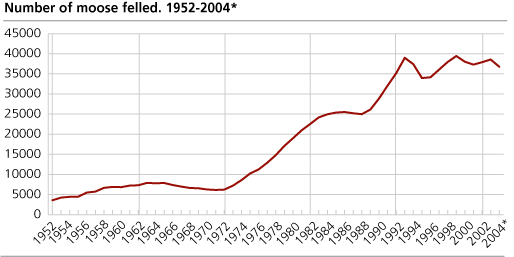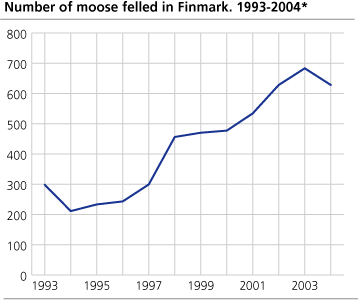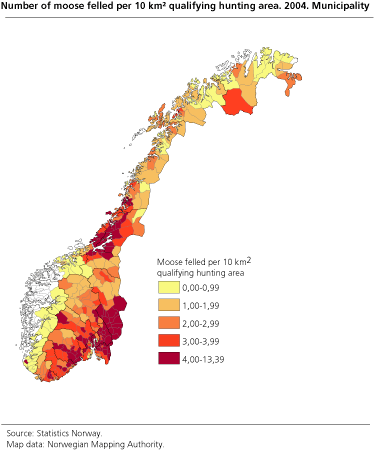Content
Published:
This is an archived release.
Decline for moose hunt
A total of 36 800 moose were felled in the autumn 2004, 1 800 animals less than in 2003. The decline is mostly due to reduced felling quotas in several counties.
Decline in south - increase in north
The felling quota was reduced in many of the great moose counties in the southern part of Norway in the autumn 2004. In the counties of Hedmark, Oppland, Buskerud and Telemark the yield dropped between 8 and 12 per cent from 2003 to 2004. In the northern part of Norway the felling quotas were increased. In Sør-Trøndelag, Nord-Trøndelag, Nordland and Troms the yield rose between 2 and 9 per cent.
Most moose shot in Hedmark
19 per cent of all moose shot in the autumn 2004 were felled in the county of Hedmark. Regarding the number of hunting licenses and number of felled animals, Hedmark is the largest "moose county". 7 800 hunting licenses were issued, and 7 000 animals were felled. In the counties of Nord-Trøndelag and Telemark 5 300 and 3 700 animals were shot respectively.
By dividing the number of moose felled by the size of the qualifying area, Østfold and Akershus get the highest score. In average, 4,8 animals were shot per 10 km² of the qualifying area in autumn 2004.
Number of moose hunters
Among the cervid species, moose hunting is most common. A total of 58 100 hunters took part in moose hunting during the autumn 2003.
Tables:
Contact
-
Terje Olav Rundtom
E-mail: terje.olav.rundtom@ssb.no
tel.: (+47) 91 38 60 61
-
Anne Turi Baklien
E-mail: anne.turi.baklien@ssb.no
tel.: (+47) 48 24 45 30




